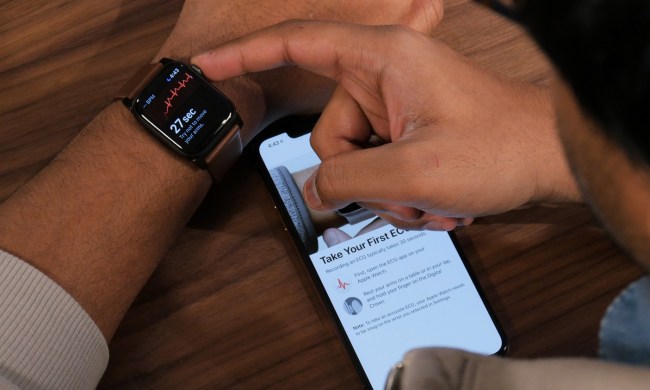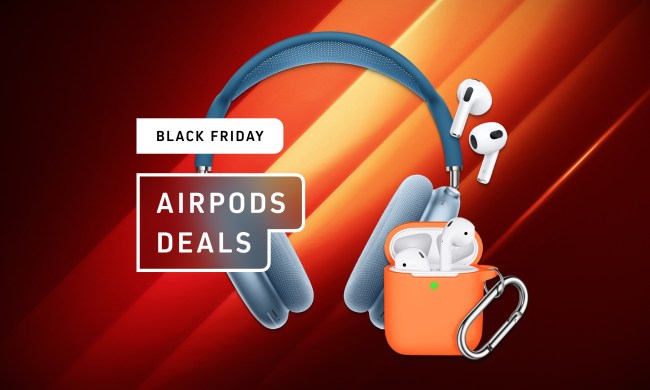
Just before the 50 minute mark of an eventual 3-0 Sporting Kansas City win over the New England Revolution last August, Kei Kamara, a charismatic forward and fan favorite for Sporting KC, separates himself from NE defender Kevin Alston. Moving right to left, he darts into the middle of the goal area, then receives a pinpoint pass from forward Soony Saad. Inside position established, Kamara heads the ball past Revolution goalkeeper Bobby Shuttleworth into the net’s left corner for a score, his second of the night. With the home crowd cheering its approval, Kamara playfully sticks out his tongue, then somersaults backwards as teammates dog pile him.
Approximately 70 seconds later, inside Sporting Park stadium, Sasha Victorine, Director of Business and Development for Sporting Innovations, treats yours truly to a replay of Kamara’s goal on his smart phone. The video was streamed through Sporting Innovations’ Uphoria app, which is the consumer-facing side its Fan 360 mobile platform. The highlight videos can be paused, rewound, and viewed from a variety of angles, all thanks to an innovative video multicasting system known as Stadium Vision mobile technology that allows game feeds to efficiently broadcast over the stadium’s WiFi.
Smith finds the best angle, and – bam – it’s on your phone’s app, like some kind of on-demand, pocket-sized Jumbo-tron.
Somewhat ironically, “mission control” for the app’s snazzy video features is little more than a senior video engineer named Brian Smith who sits alone at a table in a hallway beneath the stadium. Armed with the same kind EVS equipment used in cutting highlights for live broadcasts, Smith listens to the game’s radio call while monitoring a screen with all the game’s camera feeds displayed. Something cool happens, Smith finds the best angle, and – bam – it’s on your phone’s app, like some kind of on-demand, pocket-sized Jumbo-tron.
This is the future of the in-gamesports experience, which is largely about the in-game digital experience. And the in-game digital experience is changing everything we know about how fans consume live sporting events.
In 2011, Sporting Park became the first professional sports stadium in the state of Kansas (Arrowhead, where the Kansas City Chiefs play, is on the Missouri side of Kansas City). It was designed by renowned architecture firm Populous, known most recently for the London Olympic Stadium and Marlins Park in Miami (but don’t hold the baseball team’s performance against the architects). At 342,105 square feet, Sporting Park houses up to 18,467 fans during soccer games, and features all sorts of goodies you’d expect at a modern stadium. What sets the place apart as a standard bearer for the future is its digital DNA.

The building was created with an eye towards a 21st century world whose culture is steeped in handheld devices, social media, and the web. Ridiculous as it may sound, if you work at a professional sports stadium, one of the most common complaints you’re likely to field (after the performance of the team itself, of course) is an inability for fans to use their phone due to the cell signal. The brain trust behind Sporting Park didn’t want to simply meet these demands; they wanted to leverage our connectivity addiction to improve and monetize the fan experience.
“The stadium is completely centered around the fan,” says Ben Gartland, editor of The Daily Wiz, SBNation’s Sporting KC blog. “Sporting realizes the impact that social media can have on advertising and general attitude towards the club so they offer a great WiFi signal so that people can easily tweet or upload pictures of them having a good time at Sporting Park. This is a much different atmosphere than a poor cell signal I’ve gotten at Kauffman or Arrowhead stadiums.”
“If you let them look down, they might as well stay at home, the screen is always going to be better there.”
What does this all mean in application? Well, for starters, you’re being monitored. Migration patterns of fans are tracked through phone signals, and the data repurposed into knowledge about how you (yes, you) spend time and money while inside the stadium. This isn’t simply about passing along potentially lucrative information to sponsors and partners – although, make no mistake, that’s not not about that. It’s about research to improve your experience at Sporting Park. In a perfect world, they’ll know Joe Q. Fan well enough to send him merch coupons if it’s been a while since he updated his jersey collection, have his favorite park grub pre-made at a concessions stand, and other futuristic perks.
“We’re working on a concept of converting your [phone] from an app-based approach to an experience-based approach,” says Asim Pasha, Sporting Innovations co-founder and co-CEO. “At the back end, we know a lot of stuff about your transactions. We know your profile. We understand your spending habits, your social media interactions. And we’re leveraging all of that to generate knowledge, so then we can drive the experience in a time-sensitive manner.”
But in terms of what fans currently notice, this souped-up WiFi serves an audience that is, quite frankly, entrenched in social media and addicted to information, all of which is conveyed through a smart phone.

“The interesting thing is that the model has changed pretty rapidly over the course of the last five, seven years,” says Brian Mirakian, Associate Principal and Director of Populous Activate. “[People are] on their mobile device 50, 60, 70 percent at the game; they’re wanting to stream videos, they’re wanting to engage social media, they want to be on Facebook. They want to do all these interactive things where they’re being connected to the game. That’s really shifted everyone’s thinking in terms of the importance of technology from that standpoint.”
But is it actually sound strategy? Enter outspoken Dallas Mavericks owner Mark Cuban, who certainly knows a thing or two about Internet technology, not to mention the value of in-game entertainment. In 2010, he wrote a blog post cursing the “trend of handheld video at games.” The mogul refuses to cater to the blowing wind, and summarized his distaste by saying, “The fan experience is about looking up, not looking down. If you let them look down, they might as well stay at home, the screen is always going to be better there.”
“Mark Cuban and I have had this discussion,” notes Pasha. “I’m lucky enough to be told by him that I’m full of shit.” Pasha makes clear his admiration for Cuban’s vision and energy. But that shouldn’t be confused with conceding the argument. He agrees about the importance of not interrupting the in-game experience, and sees time spent at Sporting Park as three “distinct phases,” pre-game, in-game and post-game. In-game is most sacred, where Pasha looks to minimize the distractions. “We believe when the game starts, the app starts to behave in the background,” he insists.
Then again, what defines “distraction” these days? According to Victorine, their metrics reveal that each person using the playback function spends over two minutes checking out video. If fans like what they quite literally see, it’s fair to ask if a diverted experience equals a diluted one.
“You have to think about getting people into your building. You look across to all leagues now, and everybody’s looking at, if I’m in the building, am I getting content that I can’t get at home? Am I getting things that I can’t get somewhere else? Because if that’s the case, then that’s maybe a benefit for me to come.”
Victorine may be right, but that doesn’t make those sentiments any less strange on some level. For so long, the “content” sought at a game was, you know, the game. “Stadium experience” was fueled by the collective vocal cords of fans, a few adult beverages, and that unholy neon orange substance known as nacho cheese. New-ish stadiums built before the internet truly blew up featured amenities centered around creature comforts and aesthetics, rather than connecting fans to the outside world with games played in their presence.

Cuban’s point is that any attempt to replicate the fan experience at home or the bar, where TVs are huge, couches comfortable, and food and beer (relatively) cheap is only going to dilute the fan experience in the stadium. Pasha’s point is that there’s a way for this technology to redefine that stadium experience.
In the case of Sporting KC’s crowd, Pasha’s point may have some merit.
“I don’t necessarily see it as bad because Kansas City has a pretty intelligent soccer community who knows when things are heating up and what moments could be coming,” notes Gartland. “Of course there will be people on their phones but the majority of the crowd is really focused on the game and maybe looks at their phones when there’s a bit of a break in the action. As long as they’re still selling out every match and solidifying their reputation as one of the liveliest crowds in the league, I have no problem with people glancing at their phones and embracing the Sporting Park experience online.”
We live in a world of multi-pronged attention, and live sports, like every industry, must adapt or die.
In the meantime, Sporting Park serves a means of helping the rest of the world’s stadiums stay ahead of the curve. It is referred to by Pasha, Victorine and Mirakian alike as a “living Lab,” and it’s more than just a catchy mantra. Because of the building’s smallish dimensions (relative to most stadiums) and Sporting Park KC’s smallish profile (relative to NFL, NBA and MLB squads, or the likes of Man U), experimentation is both feasible and a constant. “We can try new things without getting the backlash because we’re not the Dallas Cowboys,” explains Pasha. Still, the Cowboys, along with squads like the Seahawks and Patriots, are deeply interested in what Sporting Park learns along the way.
“We’ve seen a lot of interest from the NFL,” notes Pasha. “Dallas. New York. Seattle. The Patriots. We’ve talked to all of them. They’re trying to figure the in-venue, high value adoption proposition, because ticket sales for them are really not an issue. The issue is more about people showing up. For them it’s been about what tactics you’ve tried, what adoption you’ve seen from the fan base, and how are you engaging the older generation vs. the younger generation and what are some of the monetization strategies that have worked with your sponsors.”
Put another way: Whatever your opinion of the increasingly connected fan experience, you better charge your phone before heading to the game, because there’s only more of it to come.










